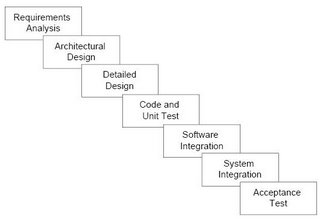
There are in fact many variations of V and waterfall lifecycle models, introducing different phases to the lifecycle and creating different boundaries between phases. The following set of lifecycle phases fits in with the practices of most professional software developers.
· The Requirements phase, in which the requirements for the software are gathered and analyzed, to produce a complete and unambiguous specification of what the software is required to do.
· The Architectural Design phase, where a software architecture for the implementation of the requirements is designed and specified, identifying the components within the software and the relationships between the components.

· The Detailed Design phase, where the detailed implementation of each component is specified.
· The Code and Unit Test phase, in which each component of the software is coded and tested to verify that it faithfully implements the detailed design.
· The Software Integration phase, in which progressively larger groups of tested software components are integrated and tested until the software works as a whole.
· The System Integration phase, in which the software is integrated to the overall product and tested.
· The Acceptance Testing phase, where tests are applied and witnessed to validate that the software faithfully implements the specified requirements.
Software specifications will be products of the first three phases of this lifecycle model. The remaining four phases all involve testing the software at various levels, requiring test specifications against which the testing will be conducted as an input to each of these phases.
